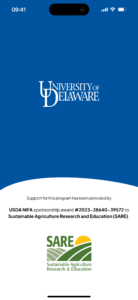Progress report for FLW24-005
Project Information
Roughly one quarter of US land is devoted to agriculture, while over one third of the food we produce ultimately goes to landfills, representing an unthinkable waste. These lost nutrients could be returned to our food systems with the help of insect allies that naturally decompose and upcycle food waste into useful products. The manure of the insects can be applied to cropland as a soil amendment shown to increase yield and decrease some pest species, and the insects themselves can be harvested to be a protein source in animal feed. The goal is to increase food security for the future while reducing food waste in the present. A key step toward realizing this goal is to equip communities with knowledge and experience to partner with insects to recapture lost food and transform it into animal feed and soil amendments. Here, we propose to: 1) demonstrate insect-based food waste upcycling in the urbanized Northeast US, 2) develop insect-based waste upcycling educational content and a mobile application for dissemination and data gathering, and 3) partner with local organizations while deploying the mobile application, document food waste diversion,
and assess user experiences. Our goal is that waste upcycling would be accessible to any household or organization that is committed to keeping food in the food system. While there will be nuances to how the process is implemented across the diverse geographies of the US, demonstration and education in the urbanized Northeast US is an important step toward reducing food loss and waste on a national scale.
Objective 1: Demonstrate insect-based food waste upcycling in the urbanized Northeast US
Objective 2: Develop insect-based waste upcycling educational content and a mobile application for dissemination and data gathering
Objective 3: Partner with local organizations while deploying the mobile application, document food waste diversion, and assess user experiences
Cooperators
Research
We have not collected any data from the upcycling site yet. Reported food waste diversion, so far, is from the PI’s household, using the same approach that we are scaling up and demonstrating for this project. We will obtain black soldier fly larvae from a food waste bioconversion company just a three-hour drive from our upcycling site next week, and will begin collecting food waste and upcycling it come April.
- Restaurant
- School/institution
- Home
- Donate or Upcycle
- Feed Animals
So far, food waste has been collected for upcycling into insect biomass for animal feed and frass for soil amendments for the PI’s household vegetable garden, once temperatures permit insect activity.
None to report at this time.
Ultimately applied as soil amendment in the PI's vegetable garden.
- Meat
- Dairy
- Grains
- Produce
- Other
90% Produce
5% Grains
1% Dairy
2% Meat
2% Other
Sor far, two local restaurants and a brewery have agreed to collect food waste that we can upcycle with the help of our insect allies.
Our waste upcycling site is cleared and ready to host fly larvae and receive food waste (photos attached showing progress at the upcycling site)
Work has begun with Mobulous to develop the smartphone application for individuals and organizations to track their food waste upcycling progress.
We have encountered difficulty nailing down plans for elementary and middle school students to visit our upcycling site and learn about the process (due to job changes and unresponsive program leaders).
Education
We have connected with environmental educators at a local elementary school district, 4H after school program administrators for a local middle school, a coordinator for hospital food services, and the Delaware Master Gardeners program. All of these groups will experience and learn about our waste upcycling approach through site visits and summer activities that they lead at their sites.
Educational & Outreach Activities
Participation summary:
No education or outreach outcomes to report yet.
Project Outcomes
While we are eager to start our demonstration (come April) and begin cataloging impacts, we do not have project outcomes to report at this time.
We do not have recommendations to provide at this time.



